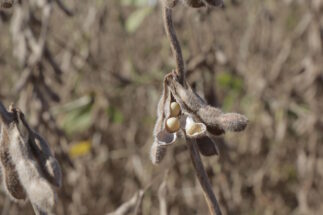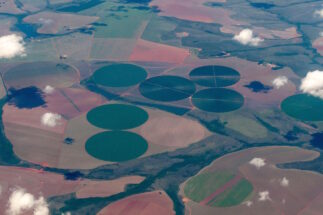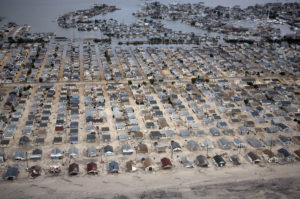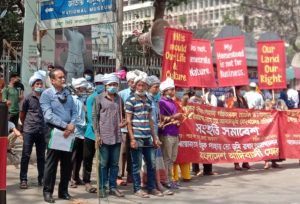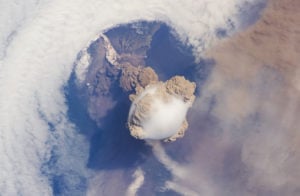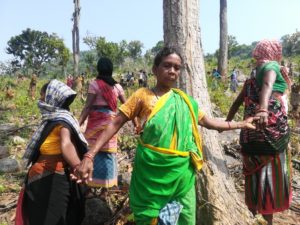Watatakalu Yawalapiti is 40 years old. She was born in the Amakapuku village, surrounded by a large preserved forest in the heart of Brazil. She spent part of her childhood on the white sands and clear waters of the Tuatuari river. At other times, she would sit in a circle listening to her great-grandfather telling stories, like the one about how the white man would arrive with a huge blade and cut down the trees as one shaves one’s body hair.
“Everyone laughed because no one thought it was true,” she said, then immediately remembers a song in the Yawalapiti language that her great-grandfather used to sing to narrate the legend.
Yawalapiti, today a local indigenous leader, grew up protected by the borders of the Xingu indigenous territory (TIX), between the states of Mato Grosso and Pará. The Xingu was the first indigenous reserve created by Brazil’s government, established 60 years ago to preserve the biodiversity and the 16 ethnic groups living there.
Inside an area larger than Israel, Yawalapiti has experienced the calmness of time marked by the rainy and dry seasons. Outside, however, things were moving fast. Every time she crossed the 290 kilometres from the village to Canarana, the nearest town, the forest had decreased. More fields had replaced it. Her great-grandfather’s fable began to take a more realistic quality.
In the last 20 years, the region around the land of Yawalapiti has been transformed into a production hub for soybeans, corn, cotton and meat, connected by highways and railways. Today, the Xingu area produces 10% of Brazil’s soybean exports.
While the agricultural frontier advances through the Xingu basin, exports continue to break records. At the same time, this is where the largest deforestation in the Amazon is happening.
Brazilian president Jair Bolsonaro supports opening up the forest to mining and agriculture, sparking protests from tribes in the Xingu who feel they are under threat.
Xingu’s indigenous people: “We no longer drink the water”
The 13 municipalities around the Xingu, including Canarana, exported 8.7 million tonnes of soy in 2020, more than half to China, according to foreign trade (Comex) data.
The same municipalities also exported 8.5 million tonnes of corn — which is intercropped with soy — which represents a quarter of last year’s shipments.
“On the east side, where Querência is, and south, with Canarana, there is an advanced consolidation of agribusiness, with multinational groups and their huge silos investing heavily,” explained Ivã Bocchini, from the Socio-Environmental Institute’s Xingu Programme.
Multinational companies such as Bunge and Cargill from the US, the Chinese Cofco and Brazil’s Amaggi have major operations in the region, according to data from the Trase platform, which tracks deforestation risk in supply chains.
As there are few unoccupied areas left, farms and reserves are now much closer together. They are like the edges of two worlds. But the consequences of deforestation and monoculture go beyond their borders.
Watatakalu Yawalapiti says that her people, who share the reserve with 15 other ethnic groups, have noticed the climate changing. The sun became hotter, the dry season longer, the river shallower and more turbid. Fish are more scarce. They lived through years of hunger and saw artesian wells appear: “We no longer drink river water, it is no longer clean.”
Other disturbances come from the increase in bush pigs, which feed on corn and soy from the plantations and invade the fields of small farmers and indigenous people.
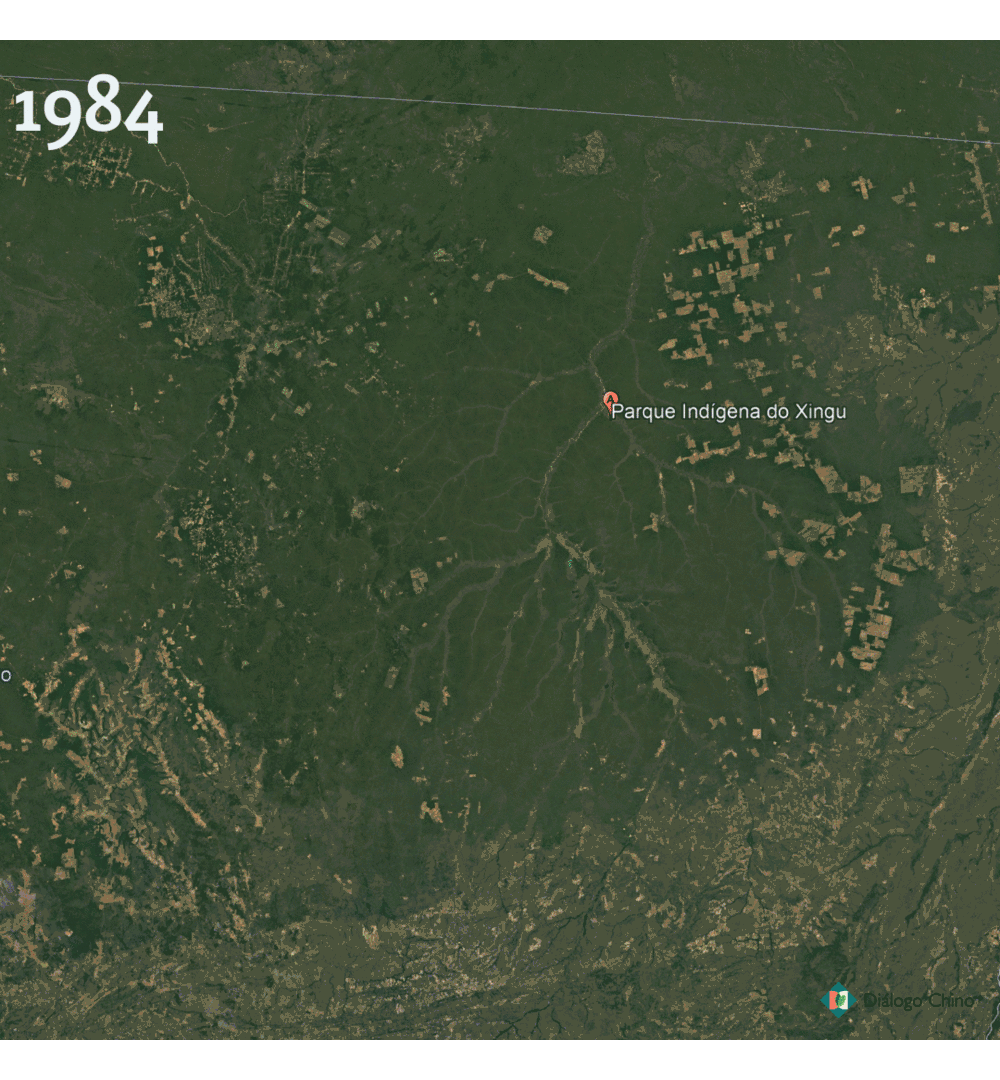
Studies confirm the Yawalapiti experience. Research shows that the rains are decreasing in the municipalities surrounding the Xingu territory where deforestation is growing. With less rainfall, drought is more intense and bush fires more frequent.
The construction of thousands of dams and reservoirs for livestock, agriculture and electricity generation also alters the flow of the waterways of the Xingu basin. The Belo Monte hydroelectric dam in Altamira threatens the very survival of the Xingu River.
This basin begins in the Cerrado biome, in Mato Grosso state, and runs for some 531,000 km2 towards the Amazon, in Pará. More than half of it is sheltered by preservation areas, but the river headwaters are impacted by deforestation and pesticides.
“Pesticides are the worst threat, because they are silent, and the TIX is like a drain into which the rivers flow,” said Bocchini, who advises indigenous organisations in the Xingu region.
In a decade, the area planted with grain crops around the Xingu territory grew 135%, and the use of pesticides, 130%. More recently, cotton, a major consumer of pesticides, began to emerge as a crop. Municipalities of the Xingu more than doubled their cotton exports in the last decade. By the end of 2020, 31,000 tonnes were exported, Comex shows. China is the main importer.
Three brothers and their campaign to protect the Xingu
Landscape in the Xingu basin started to change following the exploration of the interior of Brazil, sponsored by the 1937-1945 Getúlio Vargas government. In 1943, the Roncador-Xingu expedition left Leopoldina, in Minas Gerais, and headed northwest, cutting through central Brazil.
The expedition, made up mostly of “lawless” prospectors, opened up 1,500 kilometres of roads and erected airfields and military bases. Towns sprang up along the way.
But the expedition did not only serve to map Brazil. Due to lack of funding, it stalled in the Upper Xingu, in Mato Grosso, where the leaders, the now celebrated Villas Bôas brothers, established contact with indigenous peoples.
“The purpose of our expedition had nothing to do with Indians, this was an accident,” Orlando, the older brother, said in an interview in 2000.
The risk of the agro-industry threatening the indigenous way of life was already becoming clear. The Villas Bôas brothers allied themselves with local leaders, including Paru Yawalapiti, Watatakalu’s grandfather, in a near decade-long campaign to create the reserve.
The soy industry is moving very fast, and these people, if they can, won’t even leave a tree standing
“My grandfather was part of the expedition together with the Villas Bôas [brothers], my father learned to read with their sister, Maria de Lourdes,” Watatakalu remembered.
Orlando, Cláudio and Leonardo left their “mediocre bureaucratic lives” in search of adventure after the death of their parents, as described in the book The March Westwards.
Their chosen cause, to protect the Xingu, eventually resulted in the establishment of a protected territory in 1961. Two of the brothers earned Nobel peace prize nominations for their efforts. When Orlando died in 2002 he was given a tribal funeral, a mark of respect.
Another bid to colonise the forest
With a new government push by the military dictators to colonise central Brazil in the 1970s, large-scale deforestation began to skirt the Xingu territories. From the 2000s onwards, the international demand for commodities injected further impetus.
Following pressure to conserve the Amazon, measures including fines, the suspension of agricultural credit and pacts with companies operating in the agriculture sector have helped curb deforestation over the last decade. But a recent wave of destruction has awakened long-standing fears.
Logging, ranching and soy cultivation influence the expansion of the agricultural frontier in the Amazon. In the Xingu basin, the pattern of each industry’s growth is becoming clear. Soy is already consolidated in the south, while timber and cattle ranching are more commonplace from the middle to the north of the basin.
40%
of the beef exported from the Xingu region in 2020 went to China
Data from Comex shows that 18 municipalities in the Xingu region exported 18,300 tonnes of wood in 2020, mainly from Pará. Also, 14,800 thousand tonnes of beef were exported, 40% to China.
Infrastructure works to make mass exporting easier are major incentives for the opening of forest areas.
Edeon Vaz was a soy producer in Mato Grosso. But he decided to develop the sector in a different way. He moved to Brasília with the mission of improving infrastructure to reduce the cost of agricultural production.
“We participate in the creation of regulatory frameworks to negotiate parliamentary amendments, and we charge for the progress of the works, all of which takes a lot of time and we have to stay on top of the government,” said Vaz, who is now executive director of the Mato Grosso Pro-Logistics Movement, a lobby group.
The stretch of national highway BR-163 between Cuiabá and Santarém, is on the list of his accomplishments. The Ferrogrão railway and the dozens of industrial ports on the rivers of the Amazon from part of the same corridor.
But people from the indigenous lands of Baú, Menkragnoti and Panará say that paving the highway has created all sorts of problems, boosting land grabbing, deforestation and forest fires in the northern portion of the Xingu basin.
The highway began to be built by the military government in the 1970s and left its mark on the history of the Panará.
“It was a disaster,” said Paulo Junqueira, who advises the peoples of the region for the Socioambiental Institute. “BR-163 passed over their territory and brought infectious diseases that killed hundreds of people.”
These people were moved to the Xingu and only managed to return to their original territory two decades later, in 1996.
A village on the move
Winti Kisêdjê, 47, was born and raised in the indigenous land of Wawi, part of the municipality of Querência, in Mato Grosso. Less than five years ago it saw the arrival of agribusiness.
“Soy is already right at our border,” said the indigenous leader. “And the population has already been suffering the deterioration of the water, which created skin problems and diarrhea.”
Concerned about the organic production of honey and pequi, a native fruit, her community this year moved the village 20 kilometres into the forest. “We were afraid that the agrotoxins, which are sprayed from planes, would hit our production,” he said.
“We dropped everything to make everything again: housing, school, a health centre,” said Khĩsêtjê. “But we are afraid of how it will be in the future, whether the situation will stabilise or get even worse.”
Rising land prices
Farmer Acrísio Luiz dos Reis lives in Canabrava do Norte, a municipality in the south of the Xingu region, which faced a recent wave of deforestation.
“The soy industry is moving very fast, and these people, if they can, won’t even leave a tree standing,” said the farmer. “I think this is too bad, because, with the knowledge that we have, the more we deforest, the worse it gets; less water, more heat.”
The obstacle is not financial, because there are several organisations wanting to support restoration initiatives
He is also concerned about the real estate speculation that usually accompanies the entry of new neighbours. It is already a reality in Canabrava: “Four years ago, there was land for ten thousand reals US$1,770], or even less, per bushel; now it’s 150 thousand reals [$26,560],” he said.
The Minas Gerais native arrived in Canabrava in 1985 and today lives on a 50-hectare plot in the Manah settlement, granted by the agrarian reform programme. “I will only leave here in a wooden box now. I like it here too much, my dream came true,” said the 70-year-old farmer. “I have a small herd, I work with milk, I plant a vegetable garden and some fruit trees.”
Growing the seed network
In areas of the Xingu basin where deforestation is advancing, local indigenous and environmental groups fight to slow it. But where the damage has already been done years ago, land restoration is underway.
Since 2008, Reis has supplemented his income by collecting native seeds, including angico, cajazinha, jatobá and guaritá, found in the transition area between the Cerrado and Amazônia. He is one of the pioneers of the Xingu Seed Network, a project that promotes the planting of seedlings to restore areas degraded by agribusiness.
The initiative, which emerged after local groups noticed deteriorating water quality and scarcity of fish and turtles, ended up promoting an unusual dialogue.
On one side, farmers whose activities incur an impact on the environment promote the network. On the other, small farmers and indigenous people collect seeds. Today, there are 600 collectors from 16 municipalities of the Xingu basin.
“In the planted areas, we notice the fauna returning and the water becoming more abundant,” said Bruna Ferreira, director of the Xingu Seed Network Association.
But the work is tiny in the great scheme of what is happening. In 13 years of the initiative, the network has restored 6,000 of the more than 200,000 hectares degraded in the region. “The obstacle is not financial, because there are several organisations wanting to support restoration initiatives,” said Ferreira.
Today, the biggest problem is the lack of enforcement and the lack of interest by large deforesters in participating. “We are sought out by farmers who need to restore and want to be partners, but it’s far less than the size of the damage,” he said.


